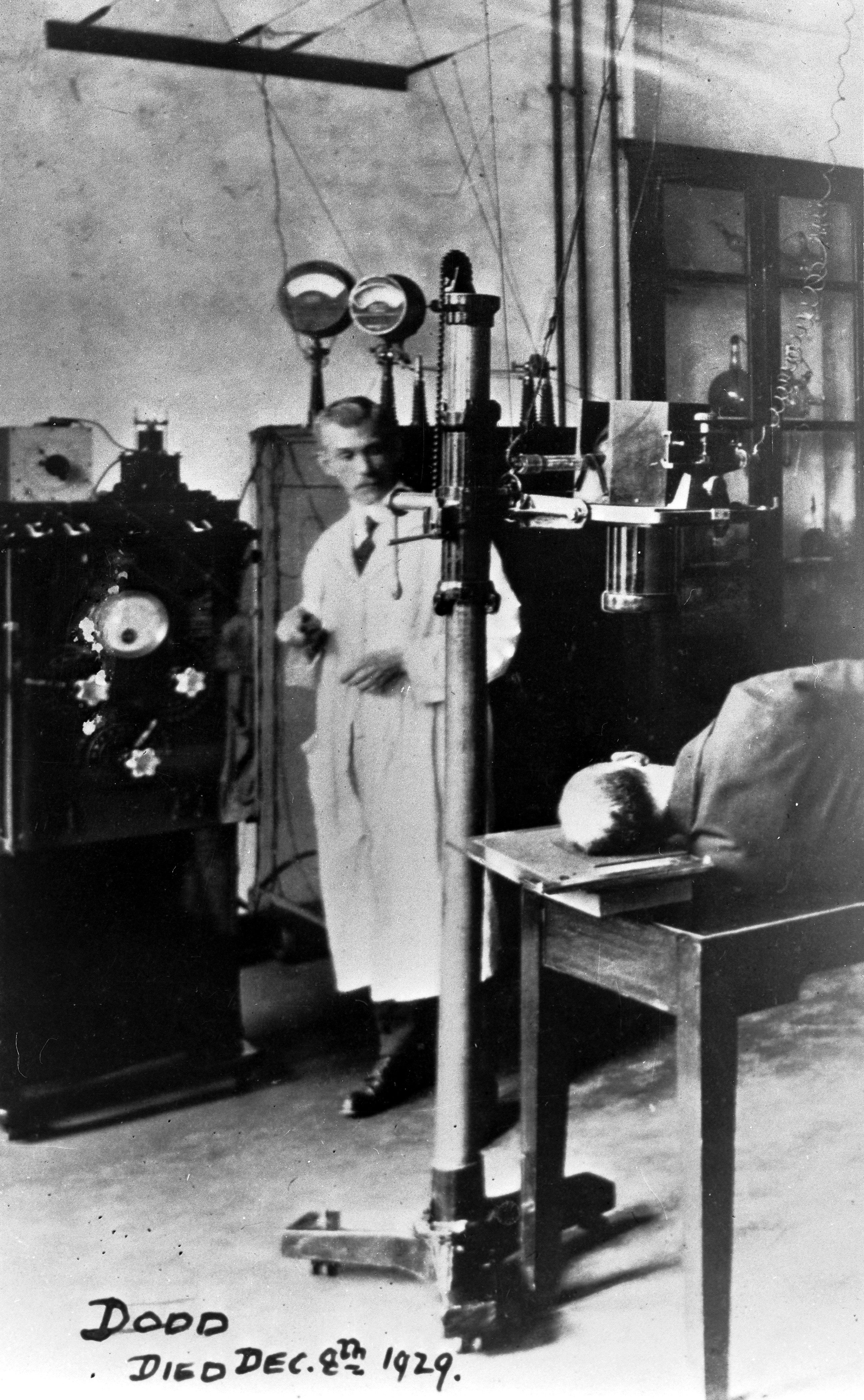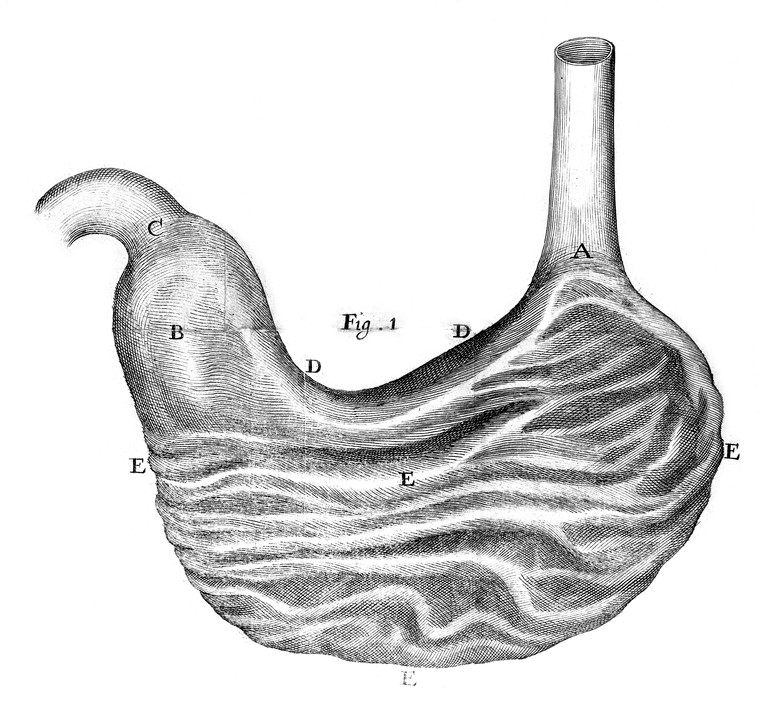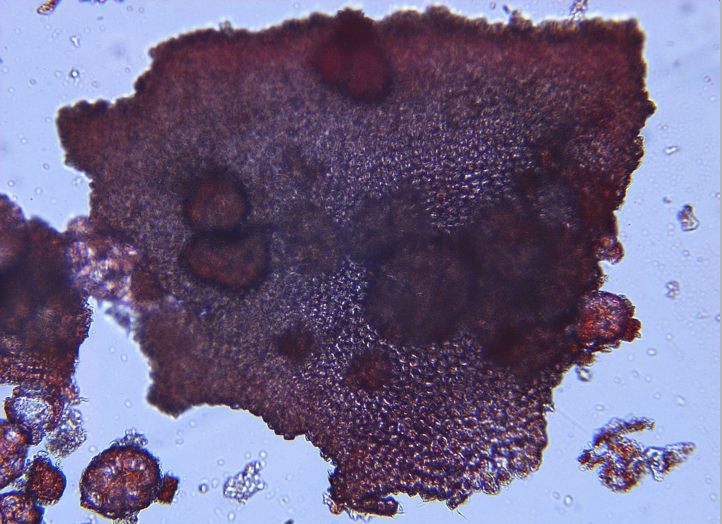How a Victim’s Last Meal Can Identify a Killer
To solve crimes, two botanists identify half-digested potatoes, tomatoes, and lettuce under a microscope.

It was 10 p.m. when the two men held up a blue Dutch Brothers coffee kiosk in Eugene, Oregon. They were wearing dark clothing and had covered their faces with handkerchiefs. The first man told the lone barista to turn around with his hands on the back of his head and close his eyes. They likely hoped that the second man could grab the cash while the other watched the barista. But the plan went wrong. The barista got out his gun and shot and killed the first man. The second man tried to get in a few shots, but soon ran away on foot.
The kiosk’s surveillance cameras were out of order, and nearby cameras did not capture the two men on video. The case might have reached a dead end there if not for the criminal’s autopsy and, specifically, the identification of what the dead man ate for dinner that night.
As a forensic analyst for the Eugene Police Department, Lisa Pope doesn’t perform autopsies, but she is sometimes in the room to help tie up any forensic loose ends. Pope was there, in 2010, for the autopsy.
“[The Medical Examiner] was examining the stomach contents, which is a part I don’t like because it doesn’t smell good,” Pope recalls. “But I started paying attention—he was pulling out food that wasn’t well-digested.”
Thanks to the process of chewing combined with caustic stomach acids, it’s typically difficult to identify foods from a deceased’s stomach contents. “But he’s pulling out chunks of hamburger about the size of my index finger, a piece of cheese, then a piece of bacon about a half inch long,” Pope says. “Then he pulls out half a French fry.”
Pope recognized it at once. It was a thick cut fry with the skin still attached—a signature of Wendy’s fries. Even better, Pope knew there was a Wendy’s restaurant just a few blocks from the Dutch Brothers kiosk. She called the lead detective, and when they asked Wendy’s for surveillance footage from that night, they found clear video of the deceased suspect and his partner ordering food, eating their meal, and then trying on their masks before walking out the door. The detectives couldn’t believe it. “If it weren’t for the stomach contents, we might not have gotten that video,” Pope says.

The first forensic autopsy used to determine whether foul play was involved in a victim’s death took place in the early 1300s. Yet these autopsies were performed sparingly, and they usually aimed to simply determine whether a victim died from heart attack or poison, knife wounds or a gunshot. If a man died of a coughing fit, the autopsy may have only looked at the throat and chest—ignoring the rest of the body. Physicians only saw what they looked for, and it wasn’t until the mid-1800s that people started championing more comprehensive autopsies that looked at every organ of the body and documented each one according to a set standard.
The Dutch Brothers Kiosk is a rare example of an old-school form of stomach analysis (using only what can be detected with the eye) working. Yet a closer look at stomach contents could lead to these almost unbelievable successes happening more often. Today most autopsies only look at stomach contents to get a vague idea of how long it’s been since a victim’s last meal. It’s rare that the deceased was such a terrible chewer that foods can be identified with the naked eye. But forensic botanists and co-authors of the book Forensic Plant Science, Jane Bock and David Norris, have proven that looking at stomach contents under a microscope can be an important tool in solving a crime—even if it is only just starting to catch on.
Bock and Norris were normal, American academics—she a botanist and he an animal ecologist—until 1982, when they got a call from an Assistant Coroner in Denver. A young woman had been murdered. The investigators knew she had eaten with her boyfriend the day before at a McDonald’s. As anyone who has seen a detective show knows, the significant other is always a primary suspect. Yet some of the deceased’s stomach contents didn’t seem to match their last meal together.
The stomach stops working after death, creating a gastronomic time capsule of the victim’s last moments. Though digestion varies from person to person, a meal is typically fully digested (and the stomach empty) six hours after eating. To determine time of death, examiners commonly look at body temperature and rigor mortis (for more recently killed victims) or decomposition and insect activity (for bodies found later). They rarely rely on stomach contents.

Yet many common models are subject to external factors such as temperature. A body found in a scorching desert will actually heat up, and a body found in a snowbank will cool more rapidly. Even rigor mortis, which can also be sped up or slowed based on the weather, relies on subjective assessments of a body’s stiffness.
While most investigators take these factors into consideration, Norris says that stomach contents are very useful, too, and can sometimes provide a more accurate timeline of the victim’s last hours. If you know about a person’s last meal and can see the volume of material left in the stomach, you can determine (if the stomach is nearly empty) that a victim was killed six hours after eating or (if full) closer to one hour after a last meal.
“This determined who the suspects were and who they weren’t,” Norris says, referring to cases where a suspect had an alibi for, say, the later possible time of death range but not the earlier one. “A lot of methods are used to determine time of death, but they all have a fairly large plus or minus factor.” In other words, stomach contents are equally or more reliable than other commonly used methods when you know the time of a victim’s last meal and can identify the meal under a microscope.
For Bock and Norris’s first case, the Denver coroner sent stomach contents swabbed onto slides. Bock, a botanist unused to dealing with dead animal material, had refused to look at them otherwise. When they examined the slides, they discovered that not only was there no trace of hamburger, but the victim’s last meal had actually been a salad—under a microscope they detected remnants of cabbage, green peppers, and kidney beans. Her last meal had been at a Wendy’s, which, in the 1980s, was one of the few fast food restaurants to have a salad bar. (Unlike the would-be Dutch Brothers robber, this woman chewed her food before swallowing, which meant fries or salad remnants couldn’t be identified by sight alone.) The boyfriend had an alibi for the evening and was no longer considered a suspect. Norris says that years later, serial killer Henry Lee Lucas confessed to her murder. (Take it with a grain of salt: Lucas has variously confessed to committing 60 to 3,000 unsolved murders.)

In another of Bock and Norris’ famous cases, a woman named Jill Coit was suspected of killing her estranged husband, Gerry Boggs. Boggs had been her ninth husband (she was married 11 times to nine different men), and they’d separated acrimoniously. Boggs was one of those men who start every morning the same way: He got up and ordered coffee, hash browns, toast, and eggs at a local diner. Then he opened the store that he ran with his brother Doug. But one morning when Doug got to work, the store was still closed. He called, but got no answer. When checked on Gerry after work, Doug discovered his brother’s body. He had been hit with a shovel, burned with a stun gun, and shot three times.
Coit was an obvious suspect—she had a pattern of marrying men for their money, and a previous husband had been killed under suspicious circumstances. She had an alibi for the later half of the day when Boggs was murdered, but not for that morning. His stomach contents were sent to Bock and Norris, who found potato and onion consistent with the contents of his last meal—breakfast. Based on that information, authorities obtained a search warrant for Coit’s home where they found the murder weapons. Jill Coit is currently serving a life sentence without possibility of parole.
Despite their early successes (and having a few of their famous cases dramatized for the television show Forensic Files), Bock and Norris have found that getting a new form of forensic science accepted by investigators is sometimes an uphill battle.
“If you pick up most textbooks on forensic science, they don’t cover botanic material at all,” Norris says. That’s one of the reasons why he and Bock wrote a textbook about forensic botany. Changing the standards for forensic science may require an overhaul of the whole system.
Yet in the 30 years he and Bock have been solving cases with botany, the number of cases they get asked to work on has gone down while the number of workshops they’ve been brought in to teach keeps increasing. They were recently invited to a regional FBI lab. “We feel that it may be a reflection that we are getting the word out.”
Over their three decade career, investigators throughout the Unites States have sent stomach contents to Bock and Norris. “Some of them would come FedEx,” Norris says. “They typically put absorbent material in with it in case the container broke, but it would be shipped like any other liquid.” Often, agents drove or flew into Colorado and delivered the contents directly to the forensic botanists. Norris says that most people are familiar with what stomach contents look like: “It looks like vomit.”
As long as the food in the sample had a cell wall—think plants rather than meat, cheese, or processed foods, which turn to “goosh,” as Norris calls it, soon after mingling with stomach acids—they can tell exactly what it was. Even when meat is relatively intact, Norris explains, since all skeletal muscle looks alike, it’s impossible to tell steak from grasshopper meat. In other words, there’s now another (admittedly macabre) reason to eat vegetables at every meal.
Gastro Obscura covers the world’s most wondrous food and drink.
Sign up for our email, delivered twice a week.































Follow us on Twitter to get the latest on the world's hidden wonders.
Like us on Facebook to get the latest on the world's hidden wonders.
Follow us on Twitter Like us on Facebook